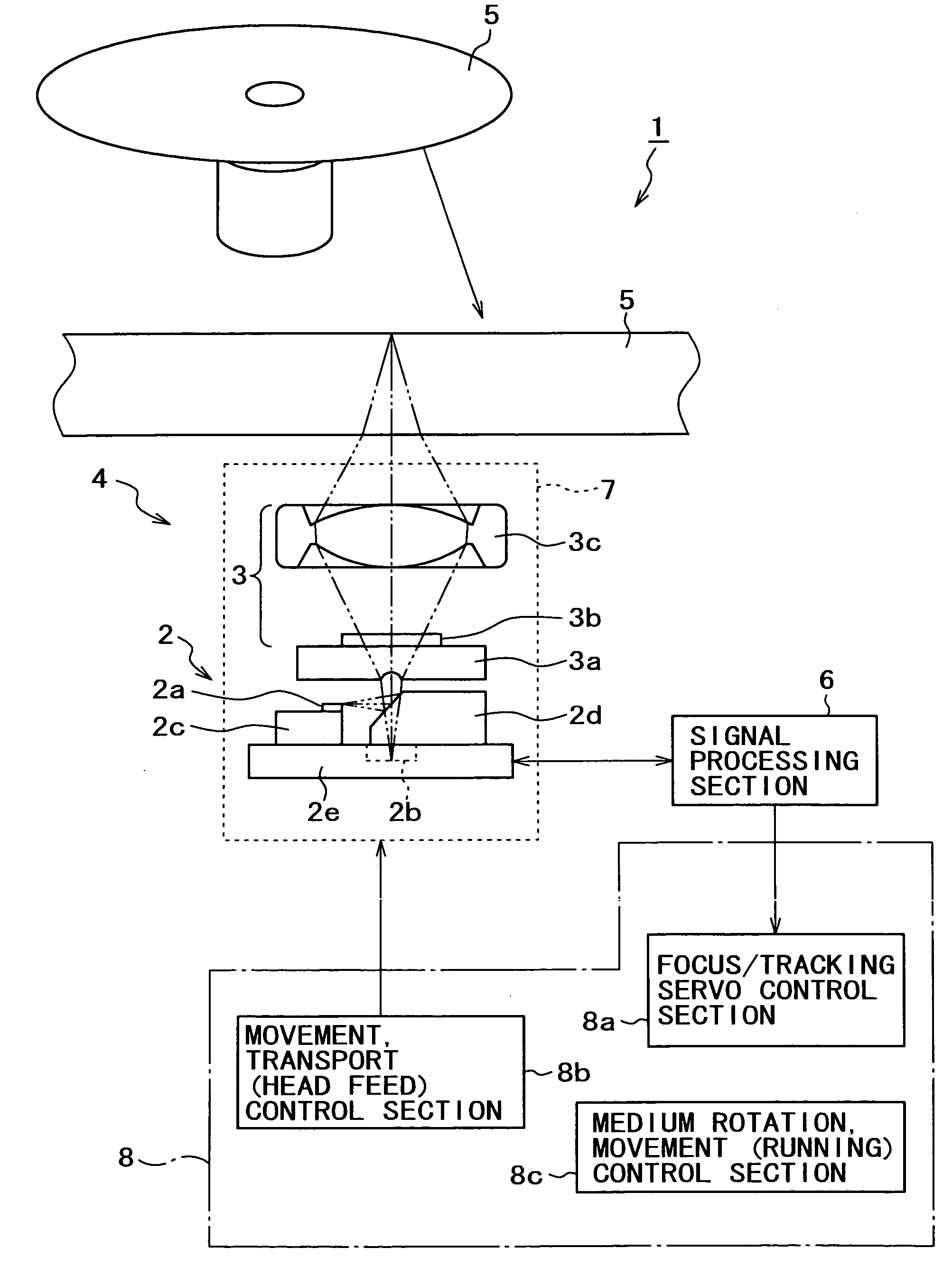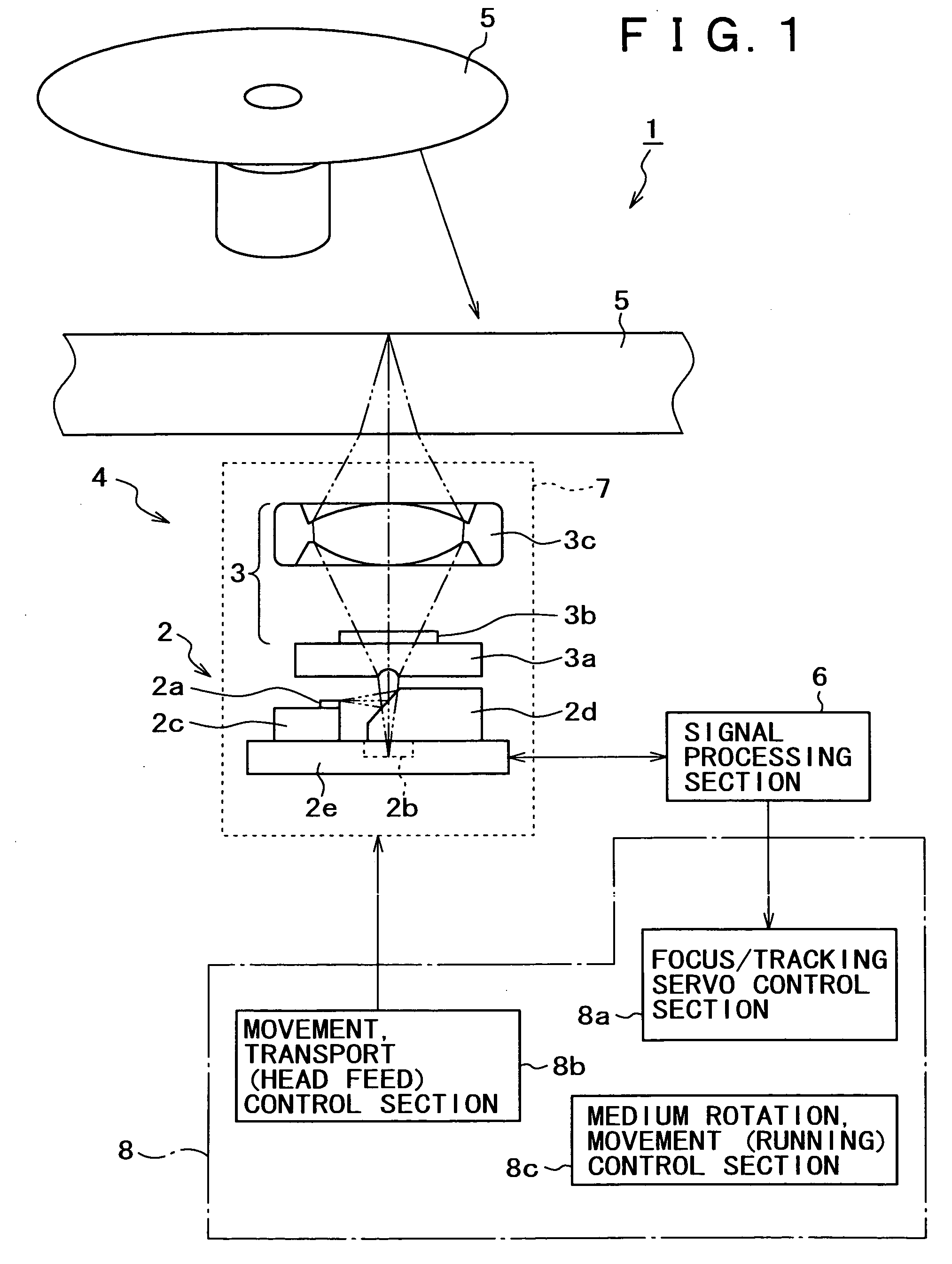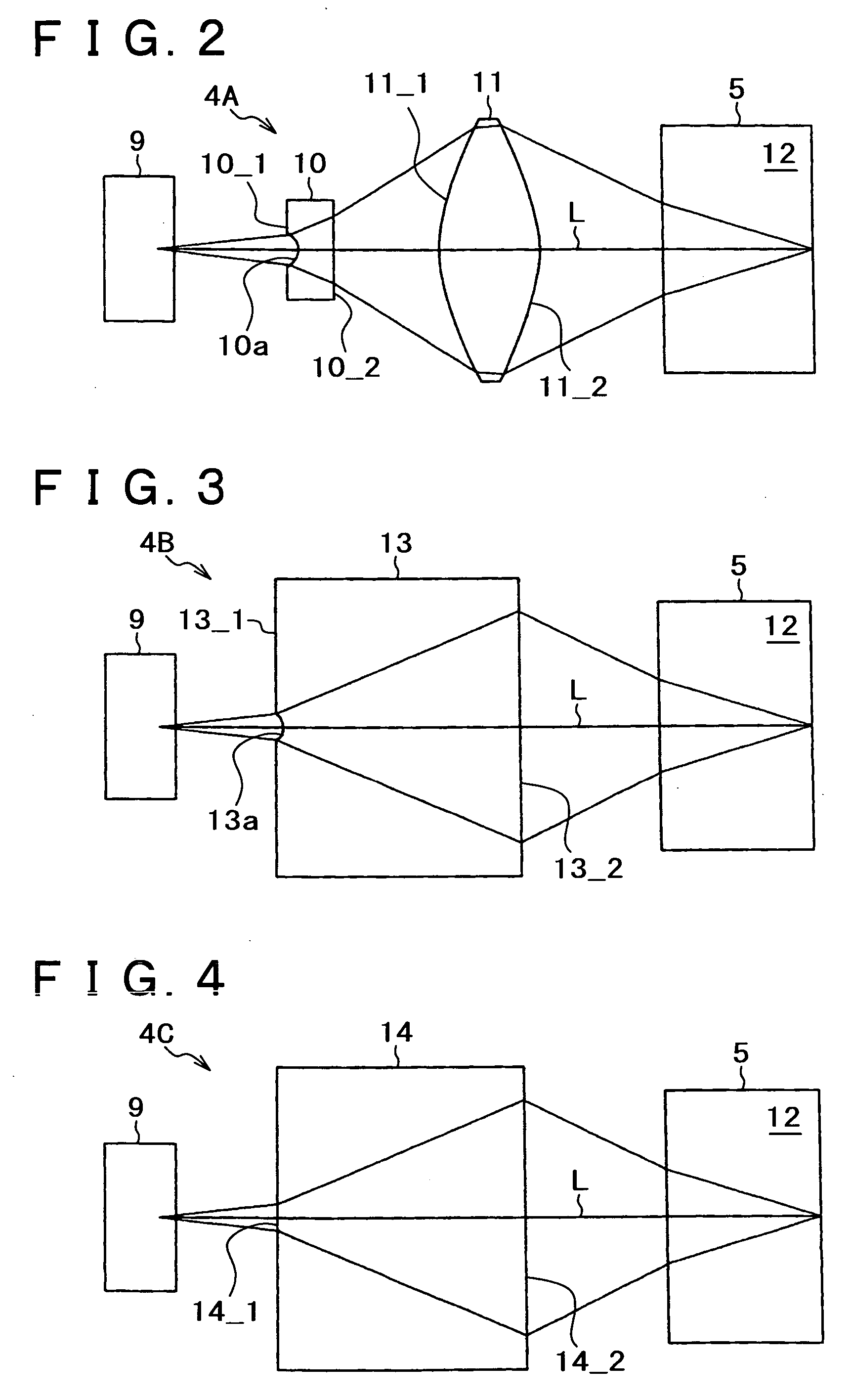Optical head apparatus and optical information processing apparatus
a head apparatus and head technology, applied in the field of optical head apparatus and optical information processing apparatus, can solve the problems of increasing the effective diameter of the necessary optical element, requiring a far greater positive power, and unable to obtain sufficient characteristics and accuracy, so as to reduce the length of the optical path of the entire optical system, the effect of reducing the length of the optical path and ensuring the working distan
- Summary
- Abstract
- Description
- Claims
- Application Information
AI Technical Summary
Benefits of technology
Problems solved by technology
Method used
Image
Examples
embodiment 1
[0042]FIG. 2 shows the essential portion of an optical system associated with the above-mentioned form (I), and in FIG. 2, “L” denotes its optical axis.
[0043] In an optical system 4A shown in this embodiment, a composite element (a so-called laser coupler) of a laser diode and a photodetector is used as a light-emitting / receiving element (or a light-transmitting / receiving element) 9, and light exiting from the composite element, after having been transmitted through a coupling lens 10, is irradiated onto an optical disk 12 (part of which is shown in FIG. 2) via an objective lens 11.
[0044] The coupling lens 10 disposed near the light-emitting / receiving element 9 has negative power as a whole. In this embodiment, a concave surface 10a is formed on a first surface 10_1 opposed to the light-emitting / receiving element 9, and a second surface 10_2 on the side of an optical disk 12 is formed as a plane surface. Incidentally, the concave surface 10a is formed as an aspherical surface havi...
embodiment 2
[0049]FIG. 3 shows the essential portion of an optical system associated with the above-mentioned form (II), and “L” denotes its optical axis.
[0050] In an optical system 4B shown in this embodiment, the light-emitting / receiving element 9 which is the same as that of Embodiment 1 is used, and light exiting therefrom, after having been transmitted through a hologram element 13, is irradiated onto the optical disk 12.
[0051] In the hologram element 13, a first surface 13_1 opposed to the light-emitting / receiving element 9 has negative power, and a concave surface 13a is formed as an aspherical surface of negative curvature. A second surface 13_2 opposed to the optical disk 12 is formed as a hologram surface having positive power. Namely, in this embodiment, positive power is obtained only from the surface on which the hologram pattern is formed on a plane surface, whereby the optical path length of the entire system can be made short.
[0052] Since the first surface having negative pow...
embodiment 3
[0053]FIG. 4 shows the essential portion of an optical system associated with the above-mentioned form (II), and in FIG. 4, “L” denotes its optical axis.
[0054] An optical system 4C shown in this embodiment differs from the optical system 4B shown in Embodiment 2 in that both the first and second surfaces of its hologram element are formed as hologram surfaces.
[0055] Namely, light exiting from the light-emitting / receiving element 9 is irradiated onto the optical disk 12 after having been transmitted through a hologram element 14, and in the hologram element 14, a first surface 14_1 opposed to the light-emitting / receiving element 9 is formed as a hologram surface having negative power, and a second surface 14_2 opposed to the optical disk 12 is formed as a hologram surface having positive power.
[0056] In this embodiment as well, it is advantageous in terms of accuracy and the number of component parts that the first surface having negative power and the second surface having positi...
PUM
| Property | Measurement | Unit |
|---|---|---|
| height | aaaaa | aaaaa |
| power | aaaaa | aaaaa |
| optical path length | aaaaa | aaaaa |
Abstract
Description
Claims
Application Information
 Login to View More
Login to View More - R&D
- Intellectual Property
- Life Sciences
- Materials
- Tech Scout
- Unparalleled Data Quality
- Higher Quality Content
- 60% Fewer Hallucinations
Browse by: Latest US Patents, China's latest patents, Technical Efficacy Thesaurus, Application Domain, Technology Topic, Popular Technical Reports.
© 2025 PatSnap. All rights reserved.Legal|Privacy policy|Modern Slavery Act Transparency Statement|Sitemap|About US| Contact US: help@patsnap.com



